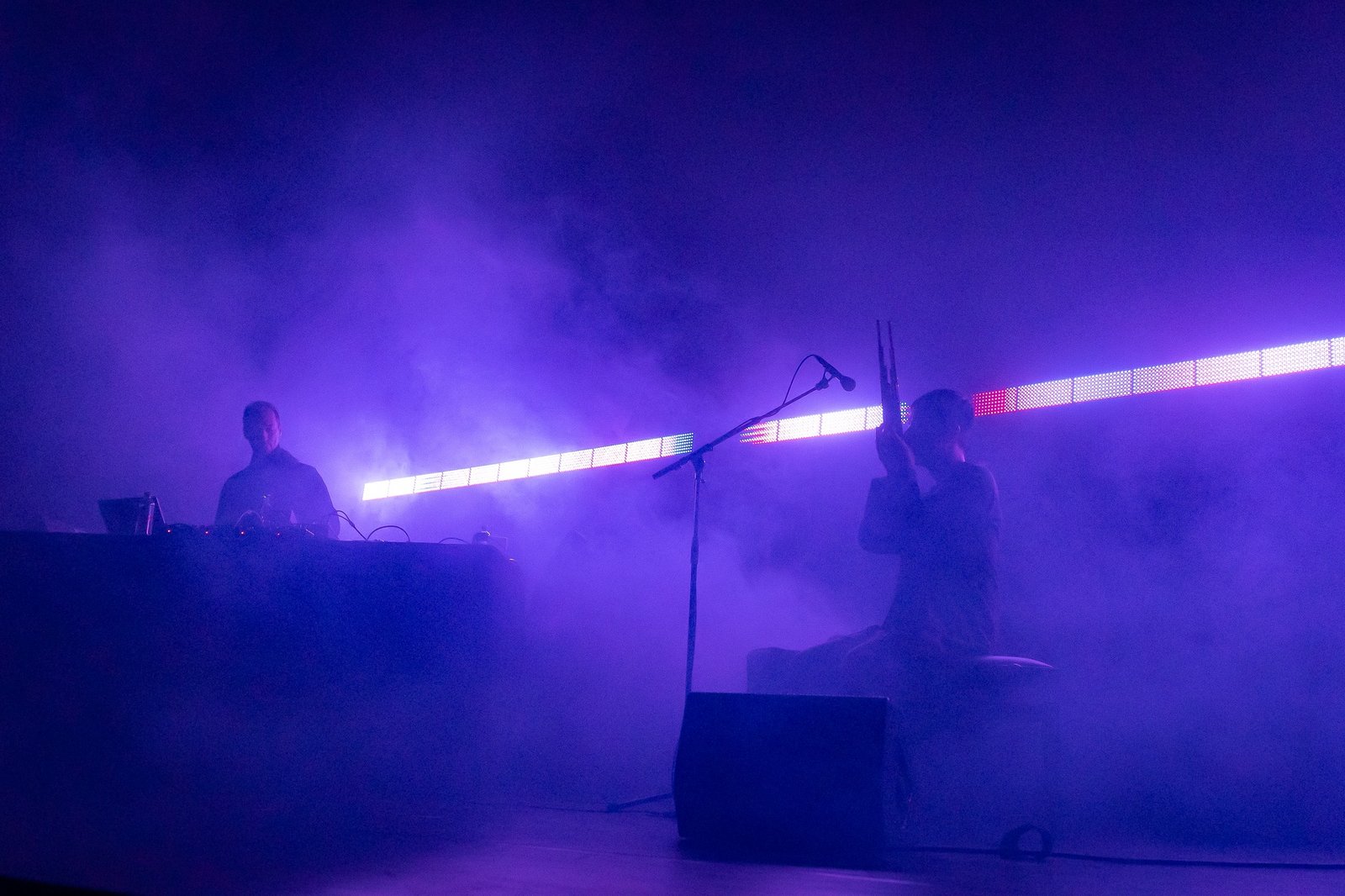It’s pretty evident to anyone paying attention within the spheres of ambient and electronic music circles that Canadian born musician, producer, and composer Tim Hecker has had somewhat of a busy year when it’s come to releasing music. The veteran sound artist, whose most notable releases include the likes of Harmony in Ultraviolet (2006) and Ravedeath, 1972 (2011), has continued to expand his taste for atmosphere and disorienting soundscapes through numerous musical outputs with collaborations with notable ambient and film composers like Aiden Baker and Jóhann Jóhannsson, as well as his own efforts at scoring for the big picture with his most recent being Infinity Pool directed by Brandon Cronenberg (well worth a watch by the way). Hecker now appears to be going back to basics with his first feature album in four years No Highs which contemplates a much more stripped back and uneasy journey into the sonic realm of quietus.
The record begins with a minimalistic series of synth notes that are presented in a sort of Morse code all whilst several layers of ambient drones are arranged around them. “Monotony” is a remarkably dense track that radiates an enigmatic energy, expressing a cyberpunk sort of vibe through its super dark conveyance of industrialised textures and Blade Runner themed synth elements. In fact, the album possesses quite a fair bit of Vangelis toned excerpts especially in the synthesized soundscapes. Take for instance the second track “Glissalia” which boasts organic synth qualities that feel engrained in a sci-fi picture’s narrative. There’s an aura of lucidity to much of these tracks, although, Hecker seems to exhibit this in the most stressful way possible. It makes the listener feel a sense of internal discomfort particularly with these elongated minor synth chords, droning orchestration, and the repetitive note sequences that in some instances, for example “Lotus Light”, persist for extended periods of time.
Whilst it’s Hecker’s primary intention, it seems, to imbue a sonic rendering of anxiety (as the track “Anxiety” itself might suggest), there are certain songs that looks to experiment with these disquieting timbres and jittery rhythms. “In your Mind” is a subconsciously explorative piece with strained synth leads and unrelaxing excerpts of sound design. “Anxiety” takes this minimalist approach one step further with these arpeggiated notes sequences, spawning from a foundation of tension and unease, and continuing to crescendo for a total runtime of just over eight minutes whilst these mystical drones find their way into the soundscape. “Monotony II” and “Total Garbage” feature a guest appearance by saxophonist Colin Stetson whose playing is somewhat translucently utilised across an apprehensive electro-acoustic display of dissonance.
In the final moments of the album Hecker utilises softer timbral elements by means of exhibiting a disconsolate atmosphere. With “Sense Suppression” we are confronted by these eerie, high-pitched leads that weave in between the isolating drones at the low end, swiftly transporting into “Living Spar Water” in what feels appropriate being described as a subversive answer to Yoshimura’s nature ambient compositions, where the calming and synchronised elements of sonic tranquillity are replaced by nervous and hesitant atmospheres that subvert the imagery of the track’s title.
This by no means is a relaxing and welcoming listen, neither is it within the confines of what ambient music might resonate in the minds of some listeners. This is a fairly challenging listen even for those familiar with Tim Hecker’s previous work as it attempts to carve out moments of tension and mystery without exploiting endless layers of instrumentation and ambient drones to make it work. No Highs is a fairly minimalist effort that maintains a somewhat anti-ambient identity whilst still establishing itself as a staple of the genre. It pervades spaces through liminal usage of sound to demonstrate, on a subconscious level, a disquieting and dissonant experience to the anxious listener.






